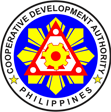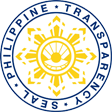- Kim’s Dream
- Orlando R. Ravanera
Unless the obstacles on rural development are erased now, the urban centers will remain congested. What are these obstacles? First is the loss of ecological integrity. The Indigenous Peoples (IPs) had been living sustainably in the forest ecosystems for thousands of years. Now that we have lost the 17 million hectares of dipterocarp forests (the richest on earth per unit area), poverty in the rural areas did loom. Where are now the 18 million IPs? They are now the poorest of the poor. Even their water rights have been taken away from them as narrated by the tribal groups in Mindanao.
Poverty is also very much glaring in the coastal communities. Of the 13 major bays in the country. 10 are already biologically dead at the expense of the fishing communities who are also becoming the poorest of the poor. Silts eroded in the denuded uplands are killing the bays, worsened by the pollution from the surrounding industries that are treating the bays as their waste pits. Before, the Philippines had been described by Dr. Kent Carpenter, the Head of the UN-FAO as “the center of the center of marine life on earth.” But the Philippine archipelago had been treated as a waste pit by some advanced countries that did earn the ire of our beloved President.
Another great obstacle to agricultural development is the powerlessness of the farmers to have control over the mode of production and marketing. The Philippines is an agricultural country and any long or short term development can be won or lost through agriculture. Indeed, poverty in our country is primarily a rural phenomenon. Two of three poor persons are located in the rural areas and are dependent on agriculture income. But who controls? Who decides? Who profits?
The poor farmers are rendered powerless by market driven conventional agriculture. Where in the world can you find farmers tilling the land not their own and using seeds and chemicals beyond their capacity to sustain. Indeed, everyone is profiting from farming – i.e., the seed and fertilizer dealers, the compradors, the usurers — but not those who are exposed to the excruciating heat of the sun and the outpourings of rains – the poor farmers.
Farming not becoming economically viable – this is foremost ground why four out of five people in the rural areas are leaving farming. While other ASEAN countries have lowered down their production cost of rice, for example, to just P5 per kilo of rice, the Filipino famers are producing rice at P13 kilo. Why? Because farming in the Philippines is so dependent on the use of chemicals.
After the 1997 signing of the ASEAN Free Trade Agreement in Cebu, no less than the King of Thailand showed to the Thai farmer how to farm using organic fertilizer. He took off his robes and planted rice, telling the Thai farmers not to use tractors aa the emission from tractors contribute to the depletion of the ozone layer. He said to use carabaos as the wastes of the carabaos would fertilizer the soil. So, the Thai farmers was able to lower down the production cost of rice to just P5 per kilo.
Now that we have allowed Rice Tarrification, our country has been flooded by rice sold at a lower price, to the detriment of our rice farmers. Indeed, let us debunk conventional agriculture as one of the obstacles NOW.
Breaking the obstacles has become imperative. Where does power in agriculture lie? Some contend that it lies with the rich agri-business sector that pursues the dominant market oriented industrial agriculture. Its drive is to promote conventional agriculture which is anchored on promoting cash crops to satisfy the market, increase the production through chemical farming using HYVs (high yielding varieties including genetically modified organisms (GMOs). The objective is to produce food not for self-sufficiency, not to meet the needs of the local communities but to produce crops with market value to sell in the world market. This is the reason why until now, despite our vast agricultural resources, the Philippines must still import rice just to feed its hungry people.
After breaking the obstacles. We must now generate opportunities through cooperativism. But how? We must regain back the lost ecological Integrity . SSTAINABILITY is one of the foremost DNA of the cooperatives, there are so many amazing stories on how the cooperatives are now becoming the countervailing force against ecological destruction and against climate change. The cooperatives of the ecological people are now in the frontline of protecting the environment against illegal logging and mining and doing sea-borne patrol to protect the integrity of the bays. Meet the Talaandig tribe of the Milallitra in Talakag, Bukidnon. MILALLITRA’s Ancestral Domain (AD) claim embraces a territory of 13,822 hecatares. They have been frontlining the multi-stakeholder initiatives called the PAYMENT FOR ECOLOGICAL SERVICES as they come together to pool resources to rehabilitate the 1,860 hectares of denuded Mt. Kalatungan Range. Headed by Datu Rio Besto, the Indigenous People in cooperation with cooperatives downstream are massively reforesting these denuded areas which had caused in 2011 the deaths of some 3,000 poor people due to Typhoon Sendong. Indeed, it is so amazing for the medium and large cooperatives to support the environmental initiatives of the IPs – from healing the blighted land back to life to advancing sustainable agriculture.The cooperatives of the IPs are now being assisted by large cooperatives to build Training Centers in the hinterlands of Mindanao. The IPs will be taught on how to make their thousands of hectares of land (Ancestral Domain) that stand idle into productive lands. After making their idle lands productive, they will not just sell raw but must be capacitated to go into value chain.
The Balik Probinsya is a great idea whose time has come to countervail against poverty in the rural areas that is now being trail-blazed by no less than the present dispensation. Indeed, for those who have dreamt, struggled, advocated, sacrificed and even died for it, social change has been so elusive all these years despite 14 years of martial law and two people-powered revolutions. The structures and ingredients perpetuating poverty were then as formidable as ever. But not anymore under the present dispensation. Under His Excellency, Mayor Rodrigo Roa Duterte change has come! From the perspective of CDA and the 11 million cooperative members, social change looms by BREAKING THE OBSTACLES NOW, GENERATING GREATER OPPORTUNITIES (BONG GO).






